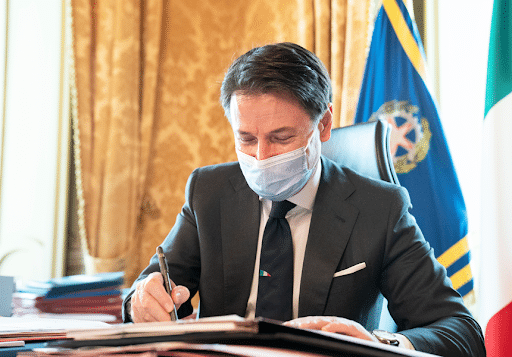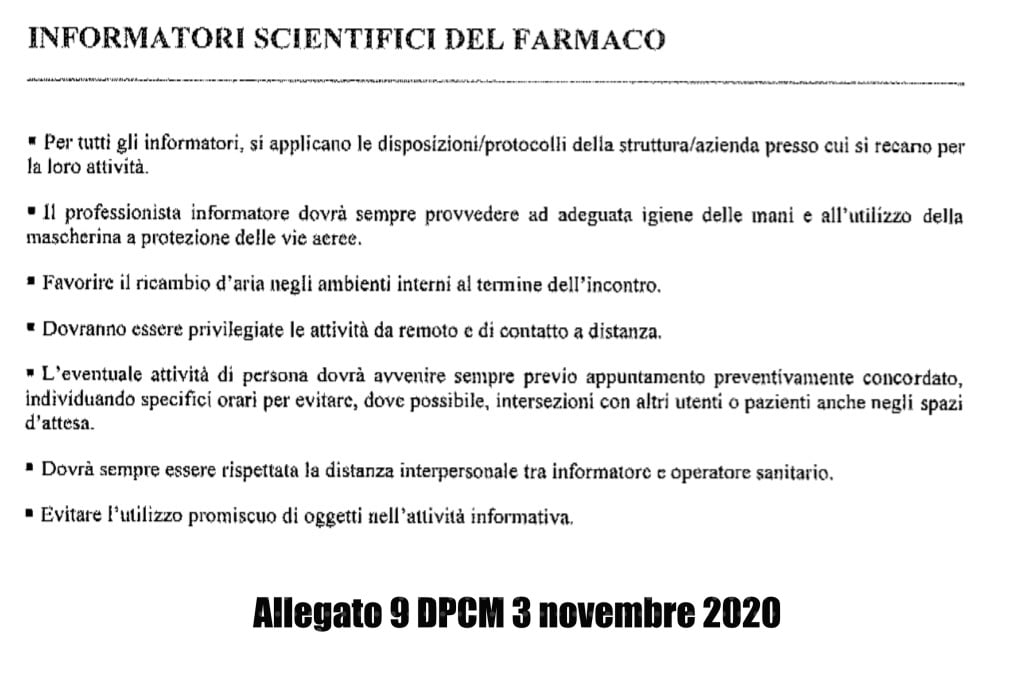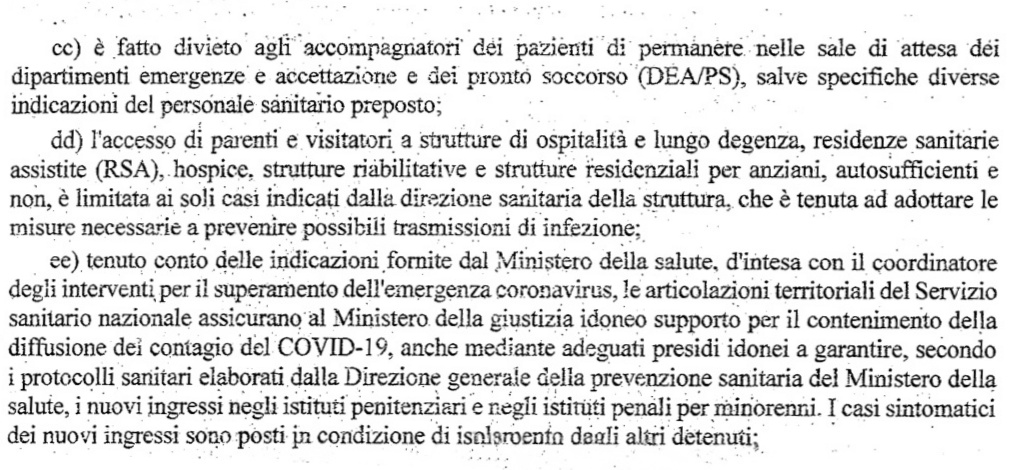There are no specific rules for ISF for which the general rules will apply
Prime Minister Giuseppe Conte signed the new Dpcm regarding the new rules and limitations to contain the spread of the Covid-19 pandemic. The signature arrived shortly after midnight, writes the Republic, and the Dpcm will be in the Official Journal this morning. The new prevention measures will be valid from 5 November, postponed to 6 November, to 3 December. Among the most discussed measures, those concerning the possibility of establishing limited red zones in the individual regions with a ban on entering and leaving the borders except for proven needs. A destiny that could soon befall Lombardy, Piedmont, Calabria, Alto Adige and Valle d'Aosta. Orange zone, however, for Puglia, Liguria and probably Veneto and Campania. Museums and amusement arcades will also be closed (in the red areas also hairdressers and beauticians), public transport will be able to fill up to 50% of capacity and the curfew will be in effect from 10pm to 5am.
Dpcm November 3, 2020, the text
Annexes to the DPCM of 3 November
DPCM November 3 in docx format
In summary:
Obligation to wear a mask in elementary and middle school
There mask will be mandatory in elementary and middle schools, even in static conditions, so children and teenagers will have to wear it even while sitting at the counter.
However, they always remain excluding children under the age of six hey subjects with pathologies or disabilities incompatible with the use of the mask.
Presence activities for childhood and primary school
The didactic and educational activity for the first cycle of education and for early childhood education services continue to take place face-to-face, except for the Regions included in the so-called red zone (scenario of maximum severity and high risk level) in which the face-to-face lessons will take place up to the first grade of secondary school. The DaD then becomes 100% second
and eighth grade, as well as for the five years of high school. In the red zone, according to the first advances, Lombardy, Piedmont and Calabria should certainly fall, and perhaps Alto Adige and Valle d'Aosta.
Travel restrictions
In the Regions belonging to the maximum risk area it will be any incoming and outgoing movement, as well as within the same territories, is prohibited, except for trips motivated by proven work needs or situations of necessity or for health reasons. However, travel strictly necessary to ensure that face-to-face teaching is permitted within the limits in which it is permitted. You will be allowed to return to your home, home or residence.
The DPCM should enter into force on Thursday 5 November and be effective until 3 December.
In the red regions in attendance up to sixth grade, the rest in DaD
In the so-called red zones, i.e. the Regions with the most serious scenario and high risk level, the face-to-face lessons will take place up to the first grade of secondary school. The DaD then becomes 100% for second and third grade, as well as for the five years of high school.
According to the first advances, Lombardy, Piedmont and Calabria should certainly fall into the red zone, and probably also Alto Adige and Valle d'Aosta.
Still with regard to schools, in the so-called areas orange and green the didactic and educational activity for the first cycle of education and for early childhood education services continue to take place face-to-face.
Extraordinary competition at risk?
From the latest rumors on the draft of the Dpcm, it emerges that they would be all public tenders suspended for the entire duration of the decree (until 3 December) The question arises spontaneously: what will become of the extraordinary secondary school competition?
The draft of the new Dpcm reports: The "suspension of the pre-selective and written tests of the public and private bankruptcy procedures and those of qualification to practice the professions, with the exception of cases in which the evaluation of the candidates is carried out exclusively on a curricular basis or electronically or in which the commission decides to proceed with the correction of the written tests with remote connection, as well as with the exclusion of competitions for healthcare personnel, including, where required, the state exams and qualification exams to practice the profession of surgeon and those for of civil protection“.
Based on what is written on this draft, the extraordinary competition it should stop and then resume when the Dpcm expires, after 3 December.
It is clear that the conditional is a must: it is necessary to wait for the definitive text of the new Dpcm to understand if the competition will really be suspended.
In any case, we believe that this would be a temporary suspension, in the sense that candidates who have already taken the exams shouldn't have any problems, while those who have not yet taken the exam should only "move the commitment”.
It is clear that even the preselection tests of the ordinary competitions for childhood and primary and secondary school, scheduled immediately after the extraordinary competition, could not be carried out under this regime.
The zones are yellow (moderate risk), orange (medium-high risk) and red (high risk). Here are the details of which Regions, to date, should fall under each of them and what the new anti-Covid measures should be for the different categories, pending confirmation.
Overall the division of regions in the different areas is currently the following:
- Yellow area: Lazio, Liguria, Molise, Autonomous Province of Trento, Sardinia, Sicily, Veneto
- Orange area: Basilicata, Calabria, Emilia Romagna, Friuli Venezia Giulia, Lombardy, Marche, Piedmont, Puglia, Umbria
- Area red: Abruzzo, Campania, Tuscany, Valle d'Aosta, Autonomous Province of Bolzano.
Related news: Self-certification model
Data from the integrated COVID-19 surveillance in Italy
L’elenco degli indicatori per identificare le zone
Monitoring will include the following indicators.
Process indicators on monitoring capacity:
• Number of symptomatic cases notified per month in which the symptom onset date is indicated/total symptomatic cases notified to the surveillance system in the same period.
• Number of cases notified per month with a history of hospitalization (in wards other than the IT) indicating the date of admission/total cases with a history of hospitalization (in wards other than the IT) notified to the surveillance system during the same period.
• Number of cases notified per month with a history of transfer/admission to the intensive care unit (IT) indicating the date of transfer or admission in Tl/total cases with a history of transfer/admission to the intensive care unit notified to the surveillance during the same period.
• Number of cases notified per month in which the municipality of domicile or residence is reported/total cases notified to the surveillance system in the same period.
• Number of checklists administered weekly to residential social and health facilities (optional).
• Number of social and health residential structures responding to the checklist on a weekly basis with at least one criticality found (optional).
Process indicators on the ability to diagnose, investigate and manage contacts:
• Percentage of positive swabs excluding as far as possible all screening and "re-testing" activities of the same subjects, overall and by macro-setting (territorial, ED/Hospital, other) per month.
• Time between symptom onset date and diagnosis date.
• Time between symptom onset date and isolation date (optional).
• Number, type of professional figures and time/person dedicated in each territorial service to contact-tracing.
• Number, type of professional figures and time/person dedicated in each territorial service to the activities of collection/sending to the reference laboratories and monitoring of close contacts and cases placed respectively in quarantine and isolation.
• Number of confirmed cases of infection in the region for which a regular epidemiological investigation with close contact tracing has been carried out/total of new confirmed cases of infection.
Result indicators relating to transmission stability and the maintenance of health services:
• Number of cases reported to Civil Protection in the last 14 days.
• Rt calculated on the basis of integrated ISS surveillance (two indicators will be used, based on the date onset of symptoms and date of hospitalization).
• Number of cases reported to COVID-net sentinel surveillance per week (optional).
• Number of cases by diagnosis date and symptom onset date reported to integrated COVID-19 surveillance per day.
• Number of new transmission outbreaks (2 or more epidemiologically linked cases or an unexpected increase in the number of cases at a defined time and place).
• Number of new cases of confirmed SARS-CoV-2 infection by Region not associated with known transmission chains.
• Number of accesses to the ED with ICD-9 classification compatible with syndromes attributable to COVID-19 (optional).
• Occupancy rate of total ICU beds (code 49) for COVID-19 patients.
• Occupancy rate of total medical area beds for COVID-19 patients.


